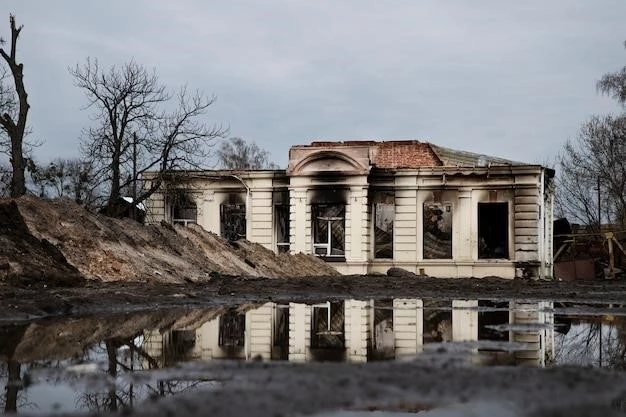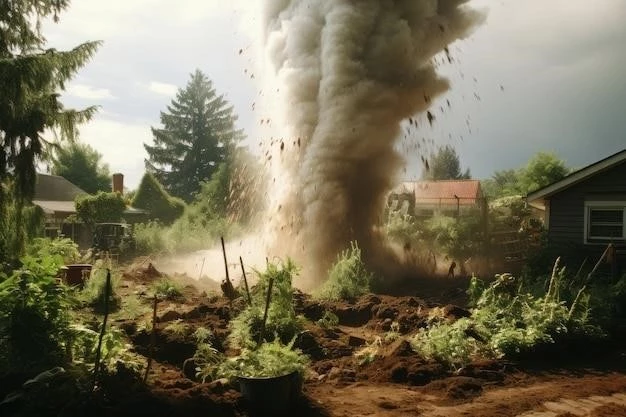Natural disasters have been a constant throughout human history, shaping civilizations and leaving indelible marks on the Earth. From earthquakes and volcanic eruptions to floods and hurricanes, these events demonstrate the immense power of nature and humanity’s vulnerability to its forces. This article delves into some of the most significant natural disasters in history, exploring their causes, impacts, and the lessons learned.

Earthquakes: Shaking Civilizations to their Core
Earthquakes, caused by the movement of tectonic plates, are among the most destructive natural disasters. The sudden release of energy sends shockwaves through the Earth’s crust, causing widespread damage and loss of life.
79 AD: The Eruption of Mount Vesuvius and the Destruction of Pompeii
One of the most famous natural disasters in history, the eruption of Mount Vesuvius buried the Roman cities of Pompeii and Herculaneum under a thick layer of ash and pumice. The eruption, which lasted for two days, ejected molten rock, pulverized pumice, and hot ash at a rate of 1.5 million tons per second, ultimately releasing a hundred thousand times the thermal energy released by the atomic bombings of Hiroshima and Nagasaki. The cities were perfectly preserved under the ash, providing a unique glimpse into Roman life.
1556: The Shaanxi Earthquake in China
Considered the deadliest earthquake in recorded history, the 1556 Shaanxi earthquake in China claimed an estimated 830,000 lives. The earthquake, which had an estimated magnitude of 8, devastated an area of approximately 840 kilometers in diameter, with ground fissures opening up and swallowing entire villages.
1923: The Great Kanto Earthquake in Japan
The Great Kanto earthquake, with a magnitude of 7;9, struck the Tokyo-Yokohama metropolitan area in 1923. The earthquake, which caused widespread fires that ravaged the densely populated wooden structures, resulted in over 140,000 deaths and left an estimated 1.9 million people homeless. The disaster highlighted the importance of earthquake-resistant construction and disaster preparedness in urban areas.
Floods: The Devastating Power of Water
Floods, often caused by heavy rainfall, overflowing rivers, or storm surges, can inundate vast areas, causing immense damage and displacing populations.
1931: The Central China Floods
The 1931 Central China floods, a series of devastating floods that occurred along the Yangtze River, are considered one of the deadliest natural disasters in history. A combination of factors, including heavy snowfall in the previous winter, a spring characterized by unusually high rainfall, and the convergence of seven cyclones over the river basin, contributed to the disaster. The floods inundated an area larger than England, Wales, and Scotland combined, affecting an estimated 50 million people and claiming an estimated 3.7 million lives.
1998: The Yangtze River Floods
In 1998, the Yangtze River experienced another major flood, resulting from heavy rainfall during the monsoon season. While not as deadly as the 1931 floods, the 1998 floods caused significant economic damage, with an estimated cost of $26 billion. The disaster highlighted the importance of flood control measures, including the construction of dams and levees, as well as the need for effective disaster response systems.
Hurricanes: The Fury of the Wind and Sea
Hurricanes, powerful tropical cyclones characterized by strong winds, heavy rainfall, and storm surges, can cause catastrophic damage to coastal areas.
1780: The Great Hurricane of 1780
The Great Hurricane of 1780, one of the deadliest Atlantic hurricanes on record, devastated the Caribbean islands of Martinique, Saint Eustatius, and Barbados. The hurricane, estimated to have had wind speeds exceeding 200 mph, caused widespread destruction and a death toll estimated to be between 20,000 and 27,500 people. The disaster highlighted the vulnerability of island nations to hurricanes and the importance of early warning systems.
1900: The Galveston Hurricane
The 1900 Galveston Hurricane٫ a Category 4 hurricane that struck Galveston Island in Texas٫ remains the deadliest natural disaster in U.S. history. The hurricane٫ with a storm surge estimated at 15 feet٫ devastated the city٫ killing an estimated 6٫000 to 12٫000 people and destroying over 3٫600 buildings. The disaster led to significant improvements in hurricane preparedness and the construction of the Galveston Seawall٫ a massive seawall designed to protect the city from future storm surges.

Lessons Learned and the Importance of Preparedness
Natural disasters throughout history have taught humanity valuable lessons about the importance of preparedness, mitigation, and resilience. While we cannot prevent natural disasters, we can take steps to reduce their impact and protect human life and property.
- Early Warning Systems: Early warning systems, coupled with effective communication channels, are crucial for providing timely alerts and enabling evacuations before a disaster strikes.
- Building Codes and Infrastructure: Implementing and enforcing strong building codes, particularly in earthquake-prone and hurricane-prone areas, can significantly reduce damage and save lives. Investing in resilient infrastructure, such as seawalls, levees, and reinforced buildings, is essential for mitigating the impact of natural disasters.
- Disaster Preparedness and Response: Developing comprehensive disaster preparedness plans, conducting regular drills, and educating the public on safety measures are crucial for building community resilience. Establishing well-equipped and trained emergency response teams can ensure a swift and effective response in the aftermath of a disaster.
- Climate Change Adaptation: As climate change increases the frequency and intensity of extreme weather events, it is essential to incorporate climate change adaptation strategies into disaster planning and risk reduction efforts. This includes investing in renewable energy, promoting sustainable land use practices, and reducing greenhouse gas emissions;
Natural disasters will continue to be a part of Earth’s story. By learning from the past, investing in preparedness, and embracing sustainable practices, we can build more resilient communities and mitigate the impact of these events on future generations.










